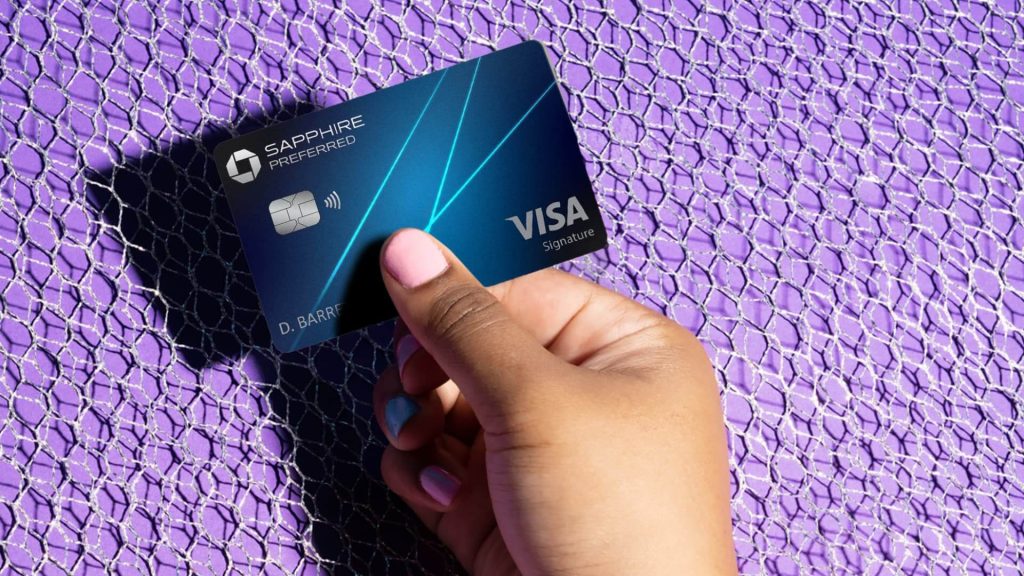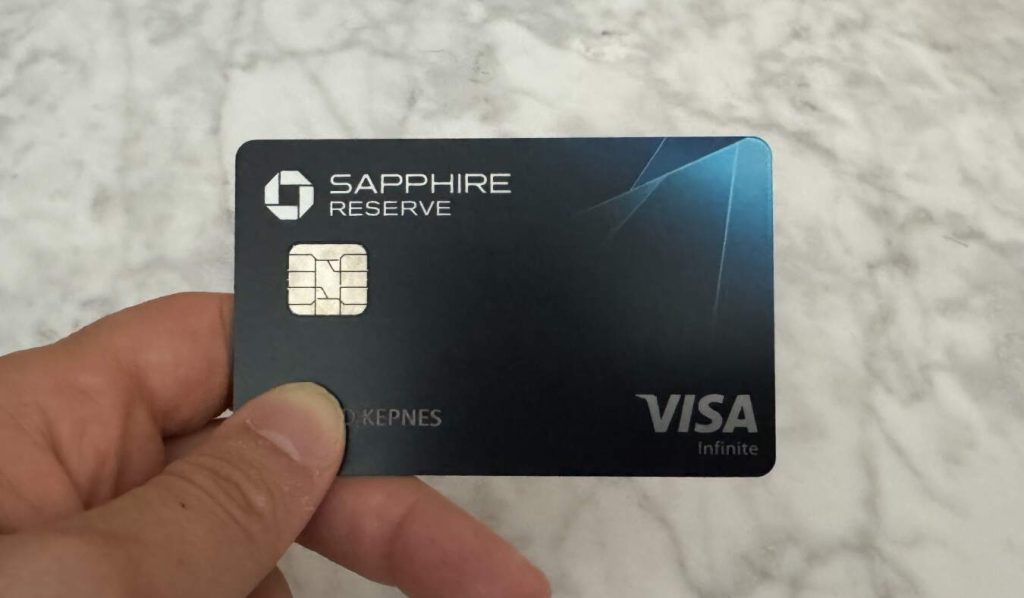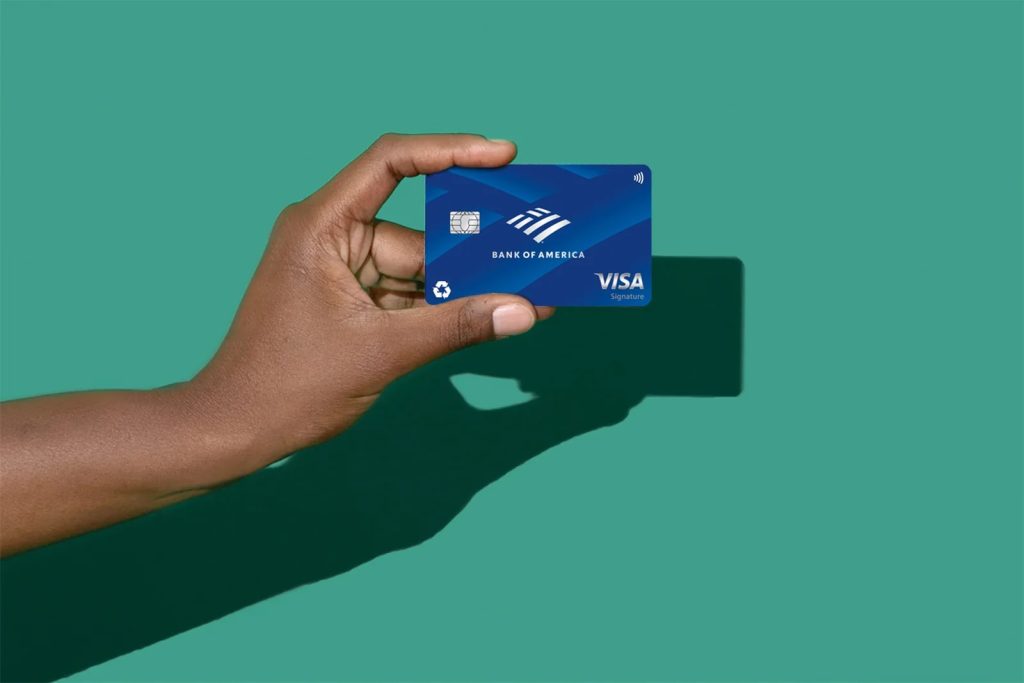
When traveling abroad, using a credit card that charges foreign transaction fees can add unnecessary costs to your trip. Many credit cards impose fees of up to 3% on purchases made outside the U.S., which can accumulate quickly. Fortunately, several credit cards designed for travelers waive these fees and offer additional benefits such as travel rewards, insurance, and lounge access.
Related article: Master Canadian Interest: Save More On Personal Finances
Related article: How to transfer your credit score when you immigrate to Canada
In this guide, we’ll explore some of the top rated travel credit cards that do not charge foreign transaction fees, helping you make informed decisions for your international travels.

Chase Sapphire Preferred® Card
The Chase Sapphire Preferred® Card is a popular choice among travelers due to its robust rewards program and travel protections. Cardholders earn 5x points on travel purchased through Chase Travel℠, 3x points on dining, select streaming services, and online grocery purchases, 2x points on other travel expenses, and 1x point on all other purchases.
New cardholders can earn a 60,000-point bonus after spending $4,000 in the first three months, which is worth $750 when redeemed through Chase Travel℠. Additional benefits include trip cancellation/interruption insurance, primary rental car coverage, and no foreign transaction fees. The annual fee is $95.
What Cards Can The Chase Sapphire Preferred Be Downgraded To?
The Chase Sapphire Preferred® Card can be downgraded to one of several no-annual-fee Chase credit cards, provided you’ve held the Sapphire Preferred for at least 12 months, as required by Chase’s product change policy (due to the CARD Act of 2009).
Downgrading a card is often a good strategy if you want to avoid the $95 annual fee but don’t want to close the account and affect your credit history.
Eligible Cards You Can Downgrade To
Here are the main options:
1. Chase Freedom Unlimited®
-
Annual Fee: $0
-
Rewards:
-
5% cash back on travel purchased through Chase Ultimate Rewards®
-
3% on dining and drugstores
-
1.5% on all other purchases
-
-
Best For: General use with straightforward rewards. This is the most popular downgrade path.
2. Chase Freedom Flex℠
-
Annual Fee: $0
-
Rewards:
-
5% cash back on up to $1,500 in combined purchases in quarterly rotating categories (activation required)
-
5% on travel booked through Chase
-
3% on dining and drugstores
-
1% on all other purchases
-
-
Best For: Those who don’t mind tracking rotating categories to maximize rewards.
3. Chase Sapphire® Card (Not available to new applicants)
-
Annual Fee: $0
-
Rewards:
-
2X on dining and travel
-
1X on all other purchases
-
-
Best For: Retaining some Sapphire-like benefits without a fee, though this card has been largely phased out.
Note: You can only hold one Sapphire-branded card at a time (either Sapphire Preferred or Sapphire Reserve), so if you want to downgrade, you’ll need to give up your Sapphire Preferred.
How to Downgrade
Downgrading isn’t available online. You’ll need to:
-
Call Chase customer service at 1-800-432-3117.
-
Request a product change (not a new application).
-
Choose your downgrade option (Freedom Unlimited or Freedom Flex are most common).
-
Ensure your account is at least 12 months old before downgrading.
Important Notes
-
You will not receive a welcome bonus on a downgraded card.
-
Your account history stays intact, so this won’t affect the age of your credit account.
-
Ultimate Rewards® points remain safe, but some changes in redemption value may occur. Sapphire Preferred gives 25% more value when redeeming through Chase Travel, which you’ll lose after downgrading.
-
Consider transferring your points to a Freedom Unlimited or Freedom Flex and pairing them with a Chase Sapphire Preferred or Chase Ink Preferred later to regain points-boosting features.
If you’re looking for lower annual fees but still want to maximize rewards, pairing a Freedom Unlimited with another premium Chase card later could be an ideal strategy.
Best Credit Card To Pair With Chase Sapphire Preferred
Pairing another credit card with the Chase Sapphire Preferred® Card is a great strategy to maximize points across all spending categories. Since the Sapphire Preferred earns bonus points on travel and dining, the ideal companion card should:
-
Earn high points in categories where Sapphire Preferred doesn’t (like gas, groceries, or everyday purchases).
-
Use the Chase Ultimate Rewards® ecosystem so you can combine points.
Best Overall Companion Card: Chase Freedom Unlimited®
Why it’s the best pair:
-
1.5% back (1.5x points) on everything else — perfect for non-bonus categories.
-
3% back on dining and drugstores — stacks well with Sapphire’s travel.
-
Points combine with Sapphire Preferred, so you can transfer to travel partners and boost redemption value via Chase Travel℠.
No annual fee, and pairs seamlessly within the Chase trifecta.
Bonus Strategy: “Chase Trifecta”
For maximum rewards, pair three Chase cards:
-
Chase Sapphire Preferred® – travel & dining (2x–5x points)
-
Chase Freedom Unlimited® – all other spending (1.5x)
-
Chase Freedom Flex® – rotating 5% bonus categories (up to $1,500/quarter)
Together, you cover nearly every category with strong earn rates — and combine all points in your Sapphire Preferred account for premium redemptions.
Want grocery rewards? Consider pairing with:
American Express® Blue Cash Preferred®
-
6% cash back at U.S. supermarkets (up to $6,000/year)
-
3% back on transit and gas
-
Doesn’t earn Chase points, but gives strong cash value for food/family spending
Drive a lot? Try:
Citi Premier® Card
-
3x points on gas, groceries, restaurants, airfare, and hotels
-
No foreign transaction fees
-
Points don’t combine with Chase, but still great for high spenders on essentials
For simplicity and synergy, the Chase Freedom Unlimited® is the #1 card to pair with Chase Sapphire Preferred. You’ll:
-
Cover everyday non-bonus spend with 1.5x
-
Still stay within the Chase ecosystem
-
Boost total travel redemption value by combining points
United Explorer Card vs Chase Sapphire Preferred
The United℠ Explorer Card and the Chase Sapphire Preferred® Card are both popular travel rewards credit cards issued by Chase, but they serve very different purposes depending on whether you prefer general travel flexibility or loyalty to United Airlines. Here’s a comprehensive, side-by-side comparison to help you decide which card better suits your travel goals:
Core Differences
| Feature | Chase Sapphire Preferred | United Explorer Card |
|---|---|---|
| Annual Fee | $95 | $95 (waived first year) |
| Points System | Chase Ultimate Rewards® | United MileagePlus® Miles |
| Best For | Flexible travel rewards, transfer partners | Loyal United flyers |
| Travel Protections | Excellent | Also strong, airline-specific |
| Airline Benefits | General | Priority boarding, free checked bag (United only) |
| Points Transfer | Yes (1:1 to 14+ partners) | No |
| Welcome Bonus | 75,000 points after $4,000 spend in 3 months | 60,000 miles after $3,000 spend in 3 months (as of May 2025) |
Points & Redemption Flexibility
Chase Sapphire Preferred
-
Earn 2x points on:
-
Travel (after $50 annual hotel credit through Chase Travel)
-
Dining (including eligible delivery and takeout)
-
-
Earn 5x points on travel purchased through Chase Ultimate Rewards®
-
Points are worth 25% more when redeemed for travel through Chase
-
Points can be transferred 1:1 to airline and hotel partners, including United Airlines, Hyatt, Southwest, etc.
Ideal for travelers who value flexibility and want to book through any airline, hotel, or transfer for max value.
United Explorer Card
-
Earn 2x miles on:
-
United purchases
-
Dining
-
Hotel stays booked directly
-
-
Earn 1x mile on all other purchases
-
Miles can be redeemed for United flights and partner airlines in Star Alliance, but can’t be transferred like Chase points
Ideal for frequent United flyers who want free bags, better boarding, and more availability for United award flights.
Travel Benefits & Protections
United Explorer Card
-
First checked bag free for you and one companion (a $140 round-trip value)
-
Priority boarding
-
2 United Club℠ passes annually
-
25% back on in-flight purchases
-
Auto rental insurance, trip delay, and lost luggage coverage
Chase Sapphire Preferred
-
Primary rental car insurance (covers theft/collision damage on rentals)
-
Trip cancellation/interruption insurance up to $10,000
-
Trip delay reimbursement up to $500 per ticket
-
Lost luggage insurance, travel accident insurance, baggage delay insurance
-
$50 hotel credit annually through Chase Travel
Chase Sapphire Preferred offers stronger and broader travel protections, while United Explorer focuses on benefits specific to United Airlines.
Annual Fee & Foreign Transaction Fees
-
Both cards: $95 annual fee
-
United’s fee is waived the first year
-
-
Neither card charges foreign transaction fees
Which One Should You Choose?
Choose Chase Sapphire Preferred if:
-
You want flexibility to book travel with any airline or hotel.
-
You want access to 14+ transfer partners like Hyatt, Air Canada, and United.
-
You value strong travel protections, bonus point categories, and general use rewards.
-
You plan to combine it with other Chase cards like Freedom Unlimited.
Choose United Explorer Card if:
-
You frequently fly United and value priority boarding and free checked bags.
-
You want access to United Club passes and loyalty perks.
-
You care more about United-specific travel benefits than transferable points.
-
You want to avoid the annual fee in the first year.
Can You Have Both?
Yes. In fact, many frequent travelers pair both cards:
-
Use Sapphire Preferred for everyday travel/dining and Chase Ultimate Rewards transfers.
-
Use United Explorer for booking United flights to get the bag and boarding perks.
This combo gives you the best of both: flexibility + loyalty perks.
Capital One Venture Rewards Credit Card
The Capital One Venture Rewards Credit Card offers a straightforward rewards structure, earning 2x miles on every purchase and 5x miles on hotels and rental cars booked through Capital One Travel. New cardholders can earn a one-time bonus of 75,000 miles after spending $4,000 within the first three months, equivalent to $750 in travel.
The card also provides up to a $100 credit for Global Entry or TSA PreCheck® and has no foreign transaction fees. The annual fee is $95.
Capital One Venture Rewards Credit Card Credit Limit
When it comes to credit limits, several factors influence the amount you’re approved for, including your creditworthiness, income, and overall financial profile.
Typical Credit Limits
As a Visa Signature card, the Capital One Venture Rewards Credit Card has a minimum credit limit of $5,000. However, many cardholders receive higher limits based on their credit profiles. According to data from Credit Karma, the average credit limit for members approved for this card is approximately $15,595, with $5,000 being the most common starting limit.
It’s important to note that while some users report initial limits as low as $3,000, others have received starting limits of $20,000 or more, especially those with excellent credit scores and higher incomes.
Factors Influencing Credit Limits
Capital One evaluates several factors when determining your credit limit, including:
-
Credit Score: A higher credit score increases the likelihood of a higher credit limit.
-
Income: Higher income can justify a larger credit line.
-
Existing Debt: Lower existing debt levels can positively impact your credit limit.
-
Payment History: A history of on-time payments demonstrates reliability.
-
Credit Utilization: Lower utilization rates suggest responsible credit management.
Capital One also considers your overall relationship with the bank, including any existing accounts and your history with them.
Increasing Your Credit Limit
If you’re looking to increase your credit limit on the Capital One Venture Rewards Credit Card, consider the following steps:
-
Consistent On-Time Payments: Demonstrating a pattern of timely payments can build trust with the issuer.
-
Regular Card Usage: Using your card regularly and responsibly can show that you can handle a higher limit.
-
Requesting a Credit Limit Increase: After several months of responsible use, you can request a credit limit increase through your online account or by contacting customer service.
-
Updating Income Information: Ensure that Capital One has your current income information, as this can influence their decision.
Capital One Venture Rewards Card Credit Score
The Capital One Venture Rewards Credit Card is designed for individuals with good to excellent credit. While Capital One suggests that applicants should have excellent credit, which typically corresponds to a FICO score of 740 or higher, many financial experts and user reports indicate that approval is possible with scores in the 670–739 range, classified as “good” credit. For instance, one analyst from Bloomberg recommended a minimum FICO score of 690 for applicants considering this card .
It’s important to note that credit score is just one factor in the approval process. Capital One also evaluates other aspects of your financial profile, including income, existing debt levels, credit history, and recent credit inquiries. Some applicants with scores below 670 have reported approvals, especially when other financial indicators are strong. For example, a user shared their experience of being approved for the Venture card with a 620 credit score, citing an income of $88,000 and a $4,000 starting credit limit .
To assess your chances without impacting your credit score, consider using Capital One’s pre-approval tool, which provides an indication of your eligibility based on a soft credit inquiry .
If your credit score is currently below the recommended range, you might explore the Capital One Venture One Rewards Credit Card, which has more lenient credit requirements and still offers travel rewards, albeit at a lower earning rate.
Capital One Venture Rewards Credit Card Airlines
The Capital One Venture Rewards Credit Card offers travelers a flexible and rewarding way to earn and redeem miles, particularly when it comes to airline travel. Here’s a look at how you can leverage this card for maximum value with airlines.
Earning Miles
With the Capital One Venture Rewards Credit Card, you earn:
-
2 miles per dollar on every purchase, every day.
-
5 miles per dollar on hotels and rental cars booked through Capital One Travel.
This straightforward earning structure makes it easy to accumulate miles quickly, regardless of spending category.
Airline Transfer Partners
Capital One has partnered with several airline loyalty programs, allowing you to transfer your miles and potentially unlock greater value. Most transfers occur at a 1:1 ratio, meaning 1,000 Capital One miles equal 1,000 airline miles. However, some partners have different transfer ratios. Here’s a breakdown:
1:1 Transfer Partners
-
Aeromexico Club Premier
-
Air Canada Aeroplan
-
Air France-KLM Flying Blue
-
Avianca LifeMiles
-
British Airways Executive Club
-
Cathay Pacific Asia Miles
-
Emirates Skywards
-
Etihad Guest
-
Finnair Plus
-
Qantas Frequent Flyer
-
Singapore Airlines KrisFlyer
-
TAP Air Portugal Miles & Go
-
Turkish Airlines Miles & Smiles
-
Virgin Red
Other Transfer Ratios
-
EVA Air Infinity Mileage Lands: 4:3 ratio
-
JetBlue True Blue: 5:3 ratio
These transfer options provide access to a wide range of airlines across various alliances, enhancing your ability to find award flights that suit your travel plans.
Booking Flights Directly
If you prefer simplicity, you can use your miles to book flights directly through the Capital One Travel portal. In this case, miles are typically valued at 1 cent per mile, so 50,000 miles would equate to $500 in travel. This method allows you to book flights on most airlines without worrying about blackout dates or award availability.
Redeeming Miles for Past Travel Purchases
Another flexible option is to use your miles to “erase” recent travel purchases. If you’ve booked a flight directly with an airline or through another travel site, you can apply your miles as a statement credit toward that purchase within 90 days. This method also values miles at 1 cent each.
Maximizing Value
To get the most out of your miles:
-
Transfer to Airline Partners: Transferring miles to airline partners can often yield higher value per mile, especially for international business or first-class flights.
-
Monitor Transfer Ratios: Keep an eye on transfer ratios, as they can change. Occasionally, Capital One offers transfer bonuses, providing even more value.
-
Plan Ahead: Award availability can be limited, so planning your travel in advance increases your chances of securing the flights you want.
The Capital One Venture Rewards Credit Card offers a versatile and rewarding experience for travelers, with multiple avenues to earn and redeem miles for airline travel. Whether you prefer the simplicity of booking through Capital One Travel or the potential for greater value through airline transfer partners, this card provides the flexibility to suit various travel styles and goals.
What is the capital one venture rewards credit card grace period?
The Capital One Venture Rewards Credit Card offers a grace period of at least 25 days. This period spans from the end of your billing cycle to your payment due date. If you pay your statement balance in full by the due date each month, you won’t incur interest charges on new purchases made during that billing cycle.
However, if you carry a balance from one billing cycle to the next, you lose the grace period. In this case, interest will start accruing on new purchases from the date of the transaction. To regain the grace period, you’ll need to pay your statement balance in full for two consecutive billing cycles.
It’s important to note that the grace period applies only to new purchases. Transactions like cash advances and balance transfers typically do not have a grace period and may start accruing interest immediately.
To avoid late fees and maintain your grace period, ensure that your payment is received by Capital One before 8 p.m. ET on your due date.
For detailed information specific to your account, it’s advisable to review your card’s terms and conditions or contact Capital One directly.
Capital One Venture Rewards Credit Card Lounge Access
The Capital One Venture Rewards Credit Card offers valuable travel rewards and benefits. However, it’s important to note that it does not provide complimentary airport lounge access. This distinguishes it from the premium Capital One Venture X Rewards Credit Card, which includes unlimited complimentary access to over 1,300 airport lounges worldwide, including Capital One Lounges and Priority Pass lounges.
For Venture Rewards cardholders, lounge access is available but comes at a cost. You can access Capital One Lounges and partner lounges by paying a fee of $45 per visit, per person. This rate is discounted compared to the standard entry fee of $90 for non-cardholders.
If airport lounge access is a priority for your travels, you might consider the Capital One Venture X Rewards Credit Card. While it has a higher annual fee, it offers extensive lounge access benefits, including complimentary entry for you and two guests per visit.
While the Capital One Venture Rewards Credit Card doesn’t offer complimentary lounge access, it does provide the option to access lounges at a reduced rate. For frequent travelers seeking more comprehensive lounge benefits, exploring premium card options like the Venture X may be worthwhile.
Capital One Venture Rewards Credit Card Pre Approval
If you’re considering applying for this card, utilizing Capital One’s pre-approval process can help you assess your eligibility without impacting your credit score.
How to Check for Pre-Approval
Capital One provides an online pre-approval tool that allows you to see if you’re pre-approved for their credit cards, including the Venture Rewards Card. Here’s how the process works:
-
Visit the Pre-Approval Page: Navigate to Capital One’s pre-approval page.
-
Provide Personal Information: You’ll be prompted to enter basic details such as your name, address, date of birth, Social Security number, employment status, income, and monthly housing costs.
-
Submit the Form: After filling out the form, submit it to see which Capital One credit cards you’re pre-approved for. This process involves a soft credit inquiry, which does not affect your credit score. Typically, you’ll receive results within about 90 seconds.
-
Review Your Offers: If you’re pre-approved, you’ll see a list of credit cards for which you qualify. You can then choose to apply for the card that best fits your needs.
It’s important to note that while pre-approval indicates a higher likelihood of approval, it does not guarantee it. If you decide to proceed with a full application, Capital One will perform a hard credit inquiry, which may temporarily impact your credit score.
Mail Offers
In addition to the online pre-approval process, Capital One may send pre-approved credit card offers via mail. These offers include a reservation number and access code, which you can use to respond to the offer online.
Benefits of Pre-Approval
-
No Impact on Credit Score: The pre-approval process uses a soft inquiry, so it won’t affect your credit score.
-
Quick Results: You’ll typically receive your pre-approval status within minutes.
-
Informed Decision: Knowing which cards you’re pre-approved for can help you make a more informed decision and avoid unnecessary hard inquiries.
American Express® Gold Card
The American Express® Gold Card is ideal for those who spend significantly on dining and groceries. Cardholders earn 4x Membership Rewards® points at restaurants worldwide and U.S. supermarkets (on up to $25,000 per year), 3x points on flights booked directly with airlines or through amextravel.com, and 1x point on other purchases.
New cardholders can earn 60,000 Membership Rewards® points after spending $6,000 within the first six months. Additional perks include up to $120 in annual dining credits and up to $120 in Uber Cash annually. There are no foreign transaction fees, and the annual fee is $325.
American Express Gold Card Credit Limit
The American Express® Gold Card operates differently from traditional credit cards: it does not have a preset spending limit. This means there’s no fixed credit limit assigned to your account. Instead, your purchasing power is flexible and can vary based on factors such as your payment history, credit record, and spending patterns.
While there’s no set limit, American Express evaluates each transaction in real-time to determine approval. This evaluation considers your current financial profile and card usage history. Over time, as you establish a positive payment history and consistent spending patterns, your purchasing power may increase.
For those who prefer to carry a balance on certain purchases, the Amex Gold Card offers a “Pay Over Time” feature. This allows eligible charges to be paid over time with interest, up to a specified limit determined by American Express.
If you’re planning a significant purchase and are unsure about your current spending capacity, American Express provides a “Check Spending Power” tool. This tool, available through your online account or the mobile app, allows you to see if a specific purchase amount would be approved.
American Express Gold Card Requirements
To be considered for the American Express® Gold Card, applicants typically need to meet the following criteria:
Key Requirements for the Amex Gold Card
1. Credit Score: A good to excellent credit score, generally 700 or higher, is recommended for approval. While some applicants with scores in the 670–699 range have reported success, a higher score increases the likelihood of approval.
2. Income: There is no official minimum income requirement disclosed by American Express. However, applicants should have sufficient income to comfortably manage monthly payments. Higher income levels can enhance approval chances, especially when combined with a strong credit profile.
3. Age and Residency: Applicants must be at least 18 years old and have a valid Social Security Number (SSN) or Individual Taxpayer Identification Number (ITIN). A physical U.S. address (not a P.O. Box) is also required.
4. Credit History: A positive credit history with on-time payments, low credit utilization, and a mix of credit accounts can strengthen your application.
Card Features
-
Annual Fee: $325
-
Rewards: Earn 4X Membership Rewards® points at restaurants, including takeout and delivery in the U.S., and 4X points at U.S. supermarkets (on up to $25,000 per year in purchases, then 1X).
-
No Foreign Transaction Fees: Ideal for international travelers.
-
No Preset Spending Limit: The card adjusts your spending power based on factors like purchase history, payment behavior, and credit record.
Application Tips
-
Pre-Approval: Utilize American Express’s pre-approval tool to check your eligibility without impacting your credit score.
-
Accurate Information: Ensure all application details are complete and accurate to avoid delays or denials.
-
Consider Timing: If you’ve recently opened multiple credit accounts or have high balances, consider waiting until your credit profile improves before applying.
Meeting these requirements does not guarantee approval, as American Express considers various factors during the application review process.
American Express Gold Card Qualifications
To qualify for the American Express® Gold Card, applicants should meet several key criteria related to creditworthiness, income, and personal information. While American Express doesn’t publicly disclose all its approval requirements, insights from financial experts and user experiences provide a clearer picture.
Credit Score Requirements
A good to excellent credit score is typically necessary for approval. This generally means a FICO score of 670 or higher. However, applicants with scores in the 700s have a stronger chance of approval. For instance, Investopedia recommends a score in the 690–850 range for the Amex Gold Card.
It’s worth noting that some users have reported approvals with scores in the mid-600s, but these cases are less common and often depend on other strong financial factors.
Income Considerations
While American Express doesn’t specify a minimum income requirement, having a steady and sufficient income is crucial. According to CNBC, unless your credit score is 700 or higher and you have a substantial income, approval may be challenging.
Data from Credit Karma indicates that the average annual income of members approved for the Amex Gold Card is approximately $105,766, though this figure can vary widely among applicants.
Age and Residency
Applicants must be at least 18 years old to apply for a credit card in the U.S. If you’re under 21, you may need to provide proof of independent income or have a co-signer.
Additionally, you should have a valid Social Security Number (SSN) or Individual Taxpayer Identification Number (ITIN) and a U.S. residential address (P.O. Boxes are typically not accepted).
Credit History and Financial Behavior
A strong credit history enhances your chances of approval. Key factors include:
-
Payment History: Consistently paying bills on time.
-
Credit Utilization: Maintaining low balances relative to your credit limits.
-
Length of Credit History: Longer credit histories are favorable.
-
Credit Mix: Having a variety of credit types (e.g., credit cards, loans).
-
Recent Inquiries: Limiting the number of recent credit applications.
American Express evaluates these aspects to assess your creditworthiness.
Pre-Approval Process
American Express offers a pre-approval tool that allows you to check your eligibility without impacting your credit score. This involves a soft credit inquiry, which doesn’t affect your credit. If you proceed with a full application and are approved, a hard inquiry will then be conducted.
Card Features Overview
-
Annual Fee: $325
-
Rewards:
-
4X Membership Rewards® points at restaurants, including takeout and delivery in the U.S.
-
4X points at U.S. supermarkets (on up to $25,000 per year in purchases, then 1X).
-
3X points on flights booked directly with airlines or on amextravel.com.
-
1X points on other eligible purchases.
-
-
No Foreign Transaction Fees: Ideal for international travelers.
-
No Preset Spending Limit: The card adjusts your spending power based on factors like purchase history, payment behavior, and credit record.
Meeting these qualifications doesn’t guarantee approval, as American Express considers various factors during the application review process. However, aligning with these criteria enhances your likelihood of being approved for the Amex Gold Card.
Amex gold card vs Chase sapphire preferred
When comparing the American Express® Gold Card and the Chase Sapphire Preferred® Card, both are excellent choices, but they cater to slightly different spending habits and travel preferences. Here’s a thorough breakdown to help you decide which is right for you:
1. Welcome Bonus
-
Chase Sapphire Preferred®:
-
Earn 60,000 points after spending $4,000 in the first 3 months.
-
Worth $750 when redeemed through Chase Travel℠.
-
-
Amex Gold Card:
-
Earn 60,000 Membership Rewards® points after spending $6,000 in the first 6 months.
-
Value depends on how you redeem, generally around $600–$1,000 depending on method (e.g., flights vs. gift cards).
-
Winner: Tie — both offer high-value bonuses, but Chase’s points are easier to maximize for beginners.
2. Earning Points
-
Amex Gold:
-
4x points at restaurants worldwide
-
4x at U.S. supermarkets (on up to $25,000 per year)
-
3x on flights booked directly with airlines or on amextravel.com
-
1x on all other purchases
-
-
Chase Sapphire Preferred:
-
5x points on travel through Chase Travel℠
-
3x on dining, streaming, and online grocery
-
2x on other travel
-
1x on everything else
-
Winner: Amex Gold — better for heavy restaurant and supermarket spenders.
3. Points Redemption
-
Amex Gold:
-
Redeem for flights, gift cards, or statement credits via Membership Rewards®
-
Best value is usually with airline transfers (Delta, ANA, etc.)
-
Travel portal is slightly less user-friendly
-
-
Chase Sapphire Preferred:
-
Points are worth 25% more through Chase Travel℠
-
Access to Chase’s Ultimate Rewards® partners (e.g., Hyatt, United, Southwest)
-
Can also redeem for cash back, Pay Yourself Back, or gift cards
-
Winner: Chase Sapphire Preferred — more beginner-friendly and offers higher baseline point value.
4. Travel Benefits & Protections
-
Chase Sapphire Preferred:
-
Primary rental car insurance
-
Trip cancellation/interruption insurance
-
Trip delay reimbursement
-
Baggage delay insurance
-
-
Amex Gold:
-
Secondary rental car insurance
-
Trip delay insurance
-
Less comprehensive than Chase in travel protections
-
Winner: Chase Sapphire Preferred — better for travel insurance and protections.
5. Annual Fee
-
Chase Sapphire Preferred:
-
$95
-
-
Amex Gold:
-
$250 (but offers offsetting credits)
-
Winner: Chase Sapphire Preferred — much lower out-of-pocket cost.
6. Perks & Credits
-
Amex Gold:
-
Up to $120 in annual dining credits (Grubhub, The Cheesecake Factory, Goldbelly, etc.)
-
Up to $120 in Uber Cash annually (via $10/month)
-
-
Chase Sapphire Preferred:
-
$50 annual hotel credit through Chase Travel℠
-
10% anniversary point bonus on total purchases
-
Winner: Amex Gold — more valuable if you’ll use the dining/Uber credits.
7. Acceptance Abroad
-
Amex Gold:
-
No foreign transaction fees
-
But American Express is still not as widely accepted internationally as Visa
-
-
Chase Sapphire Preferred:
-
No foreign transaction fees
-
Visa is nearly universally accepted
-
Winner: Chase Sapphire Preferred — better global acceptance.
Which Should You Get?
-
Choose Amex Gold if:
-
You spend a lot on restaurants and U.S. supermarkets
-
You’ll use the dining and Uber credits regularly
-
You’re comfortable navigating transfer partners for maximum value
-
-
Choose Chase Sapphire Preferred if:
-
You travel frequently and want strong insurance/protections
-
You prefer Visa’s global acceptance
-
You want a lower annual fee and easy-to-use travel rewards
-
Expert Insight
“For the average traveler, Chase Sapphire Preferred provides more versatile value, especially with its low fee and strong travel insurance,” says Greg McFarlane, personal finance author and frequent contributor to credit industry sites.
“But for foodies or big families spending heavily on groceries, the Amex Gold Card’s points power is unmatched.
Bank of America® Travel Rewards Credit Card
For those seeking a no-annual-fee option, the Bank of America® Travel Rewards Credit Card is a solid choice. Cardholders earn unlimited 1.5 points per dollar on all purchases and 3x points on travel booked through the Bank of America Travel Center.
New cardholders can earn 25,000 online bonus points after making at least $1,000 in purchases in the first 90 days, which can be redeemed for a $250 statement credit toward travel purchases. The card also offers a 0% introductory APR on purchases for the first 15 billing cycles and has no foreign transaction fees.
Bank of America Travel Rewards Credit Card Limit
The Bank of America® Travel Rewards Credit Card offers credit limits that vary based on individual creditworthiness, income, and overall financial profile. Here’s what you need to know:
Typical Credit Limits
-
Minimum Credit Limit: $500
-
Average Credit Limit: Approximately $9,718, with $10,000 being the most common among approved applicants
-
Higher Limits: Some users report initial limits up to $34,000, depending on factors like income and credit history
Factors Influencing Your Credit Limit
Your assigned credit limit is influenced by:
-
Credit Score: Applicants with scores around 699 are commonly approved
-
Income: Higher income levels can lead to higher credit limits
-
Debt-to-Income Ratio: Lower ratios are favorable
-
Credit History: A longer, positive credit history can result in higher limits
Requesting a Credit Limit Increase
To request an increase:
-
Log in to your Bank of America online account or mobile app
-
Select your Travel Rewards card
-
Navigate to Information & Services > Request a credit line increase
-
Enter your total annual income and desired credit limit
-
Submit your request
Note: Bank of America may perform a hard inquiry on your credit report, which can temporarily affect your credit score.
Tips for a Higher Credit Limit
-
Maintain a Good Credit Score: Aim for a score above 700
-
Report Accurate Income: Ensure your income information is up to date
-
Keep Credit Utilization Low: Use a small percentage of your available credit
-
Make Timely Payments: Consistently pay your bills on time
By demonstrating responsible credit behavior, you increase your chances of receiving a higher credit limit.
Capital One Venture X Rewards Credit Card
For frequent travelers seeking premium benefits, the Capital One Venture X Rewards Credit Card offers substantial rewards and perks. Cardholders earn 10x miles on hotels and rental cars booked through Capital One Travel, 5x miles on flights booked through Capital One Travel, and 2x miles on all other purchases.
New cardholders can earn 75,000 bonus miles after spending $4,000 in the first three months. Additional benefits include a $300 annual travel credit, access to Capital One Lounge and Priority Pass lounges, and up to a $100 credit for Global Entry or TSA PreCheck®. There are no foreign transaction fees, and the annual fee is $395.
Capital One Venture X Rewards Credit Card Lounge Access
The Capital One Venture X Rewards Credit Card offers comprehensive airport lounge access, providing cardholders with a premium travel experience.
Lounge Access Benefits
1. Capital One Lounges
Venture X cardholders receive unlimited complimentary access to Capital One Lounges. These lounges feature amenities such as chef-inspired dining, craft cocktails, relaxation rooms, high-speed Wi-Fi, and shower suites. Cardholders can bring two guests for free per visit; additional guests are charged $45 each.
Current Capital One Lounge locations include:
-
Dallas-Fort Worth International Airport (DFW)
-
Denver International Airport (DEN)
-
Washington Dulles International Airport (IAD)
-
Ronald Reagan Washington National Airport (DCA)
-
Harry Reid International Airport (LAS)
2. Priority Pass Select Membership
Venture X cardholders are eligible for a complimentary Priority Pass Select membership, granting access to over 1,300 lounges worldwide. Enrolment is required through the Capital One website. Members can bring two guests for free per visit; additional guests may incur fees depending on the lounge.
3. Plaza Premium Lounges
Cardholders also enjoy unlimited complimentary access to Plaza Premium Lounges, which operate over 100 locations globally. Amenities typically include comfortable seating, complimentary food and beverages, Wi-Fi, and charging stations. Two guests are admitted free per visit; additional guests may be subject to fees.
Authorized Users
Venture X allows up to four authorized users at no additional cost. Each authorized user receives the same lounge access benefits, including entry to Capital One, Priority Pass, and Plaza Premium lounges, along with the ability to bring two guests per visit.
Access Requirements
-
Capital One Lounges: Access is permitted within three hours of your scheduled departure.
-
Priority Pass Lounges: A same-day boarding pass is required for entry.
-
Plaza Premium Lounges: Access policies may vary by location; it’s advisable to check specific lounge requirements before travel.
Additional Card Benefits
Beyond lounge access, the Venture X card offers:
-
A $300 annual travel credit for bookings through Capital One Travel.
-
A 10,000-mile anniversary bonus each year.
-
TSA Precheck or Global Entry application fee credit (up to $100).
-
Unlimited 2X miles on every purchase, with higher earning rates on travel booked through Capital One.
For frequent travelers, the Capital One Venture X Rewards Credit Card provides substantial value through its extensive lounge access and travel benefits.

Delta SkyMiles® Blue American Express Card
For Delta Air Lines enthusiasts, the Delta SkyMiles® Blue American Express Card offers 2x miles at restaurants worldwide and on Delta purchases, and 1x mile on other eligible purchases.
New cardholders can earn 10,000 bonus miles after spending $1,000 in the first six months. The card has no annual fee and no foreign transaction fees. However, it lacks some travel perks like free checked bags or priority boarding.

Chase Sapphire Reserve®
For those seeking luxury travel benefits, the Chase Sapphire Reserve® offers extensive rewards and perks. Cardholders earn 10x points on hotel stays, car rentals, and Chase Dining purchases through Chase Travel℠, 5x points on air travel through Chase Travel℠ after earning the $300 travel credit, 3x points on restaurant and general travel purchases, and 1x point on all other purchases.
Points are worth 50% more when redeemed through Chase Travel℠. Additional benefits include a $300 annual travel credit, complimentary lounge access, and up to a $100 credit for Global Entry or TSA PreCheck®. There are no foreign transaction fees, and the annual fee is $550.
Chase Sapphire Reserve Travel Insurance
The Chase Sapphire Reserve® card offers a comprehensive suite of travel insurance benefits, providing cardholders with robust protection for various travel-related incidents. Here’s an overview of the key coverages:
Trip Cancellation & Interruption Insurance
-
Coverage Amount: Up to $10,000 per person and $20,000 per trip for non-refundable travel expenses.
-
Covered Reasons: Illness, severe weather, jury duty, and other specified events.
Trip Delay Reimbursement
-
Trigger: Delays of more than 6 hours or requiring an overnight stay.
-
Coverage Amount: Up to $500 per ticket for unreimbursed expenses like meals and lodging.
Baggage Delay Insurance
-
Trigger: Bags delayed over 6 hours.
-
Coverage Amount: Up to $100 per day for 5 days to cover essentials.
Lost Luggage Reimbursement
-
Coverage Amount: Up to $3,000 per passenger for lost or damaged luggage.
Auto Rental Collision Damage Waiver
-
Coverage: Primary coverage up to $75,000 for theft and collision damage.
-
Requirement: Decline the rental company’s collision insurance and pay with your card.
Emergency Medical & Dental Benefit
-
Coverage Amount: Up to $2,500 for medical expenses incurred during travel.
-
Deductible: $50 per claim.
Emergency Evacuation & Transportation
-
Coverage Amount: Up to $100,000 for emergency evacuation and transportation due to medical emergencies.
Travel Accident Insurance
-
Coverage Amount: Up to $1,000,000 for accidental death or dismemberment when travel is purchased with the card.
Roadside Assistance
-
Services: Towing, jump-starts, tire changes, lockout assistance, and fuel delivery.
-
Coverage: Up to 4 service calls per year, with a maximum of $50 per call.
Note: To activate these benefits, you must pay for travel expenses with your Chase Sapphire Reserve® card or redeem points through Chase Ultimate Rewards®. Always review the full terms and conditions in the guide to benefits for detailed information on coverage, exclusions, and claim procedures.
Chase Sapphire Reserve Lounge Access
The Chase Sapphire Reserve® card offers premium airport lounge access as part of its travel benefits, giving cardholders access to a large global network of lounges for a more comfortable travel experience.
Lounge Access Overview
Priority Pass™ Select Membership
-
What You Get: Complimentary unlimited access to over 1,300 airport lounges worldwide.
-
Guests: Includes two free guests per visit. Additional guests may be charged a fee (typically ~$32 per person).
-
Access Type: Includes both traditional lounges and Priority Pass restaurants (where available).
-
Enrollment Required: You must activate your Priority Pass Select membership through your chase account.
Access covers lounges in over 600 cities and 140+ countries.
How to Enroll
To activate your Priority Pass membership:
-
Log in to your Chase account.
-
Go to your Sapphire Reserve Benefits page.
-
Find Priority Pass Select, and click Enrol.
-
Chase will mail you a physical membership card (or you can use the Priority Pass app for digital lounge access).
Important Notes
-
Priority Pass Restaurants: As of 2019, Priority Pass restaurants are included with Chase Sapphire Reserve (unlike with Amex Platinum, which excludes them).
-
Arrival Limitations: Most lounges allow access within 3 hours of departure. Some restrict access during peak hours or for arriving passengers.
-
Authorized Users: Each authorized user ($75 annual fee per user) also receives their own Priority Pass Select membership.
No Access to Chase Sapphire Lounges (Yet)
Unlike Capital One or Amex, Chase is still in the process of rolling out its own Chase Sapphire Lounge network in select U.S. and international airports. When available:
-
Sapphire Reserve cardholders will have free access.
-
Sapphire Preferred cardholders and non-Chase users may pay a fee.
As of 2025, Chase Sapphire Lounges are open (or soon opening) at:
-
Boston Logan (BOS)
-
Hong Kong (HKG)
-
New York LaGuardia (LGA)
-
Las Vegas (LAS)
-
San Diego (SAN)
-
Philadelphia (PHL)
These lounges are operated in partnership with The Club and offer amenities like gourmet food, showers, and workspaces.
The Chase Sapphire Reserve® provides excellent lounge access value via Priority Pass Select, especially for frequent international travelers. It includes restaurants, worldwide coverage, and multiple guests — features that often come with higher-end cards.
Capital One Venture X vs Chase Sapphire Reserve
The Capital One Venture X and Chase Sapphire Reserve® are two of the most premium travel credit cards on the market, both offering exceptional value to frequent travelers. Choosing between them depends on your travel habits, loyalty preferences, and how you plan to redeem rewards. Here’s a detailed, side-by-side breakdown:
Overview: Venture X vs Sapphire Reserve
| Feature | Capital One Venture X | Chase Sapphire Reserve® |
|---|---|---|
| Annual Fee | $395 | $550 |
| Welcome Bonus | 75,000 miles after $4,000 spend in 3 months | 60,000 points after $4,000 spend in 3 months |
| Effective Travel Credit | $300 (Capital One Travel only) | $300 (any travel purchase) |
| Rewards on Travel | 10x on hotels/rental cars + 5x on flights (via Capital One Travel), 2x on everything else | 10x on hotels/cars, 5x flights (via Chase Travel), 3x on travel & dining, 1x on everything else |
| Lounge Access | Capital One Lounges + Priority Pass + Plaza Premium | Priority Pass Select (including restaurants) + Chase Sapphire Lounges |
| Transfer Partners | 15+ partners, 1:1 mostly | 14 partners, all 1:1 |
| Authorized Users | 4 free | $75 each |
| Travel Insurance | Solid coverage | Industry-leading coverage |
| Redemption Value | Fixed (1 cent per mile) or transfer | Best value through Chase Ultimate Rewards (1.5¢ per point) or transfer |
Rewards & Redemption
Capital One Venture X
-
Earn 2X miles on all purchases.
-
Earn 10X on hotels/rental cars, 5X on flights via Capital One Travel.
-
Miles are worth 1 cent each for travel, or can be transferred to over 15 airline and hotel partners (mostly 1:1).
-
Easy-to-use redemption: book travel, erase purchases, or transfer.
Chase Sapphire Reserve
-
Earn 3X points on travel and dining, 10X on hotels and cars, and 5X on flights (all via Chase Travel).
-
Points are worth 1.5 cents each through Chase Ultimate Rewards.
-
Transfer to 14 airline and hotel partners at 1:1 ratio—often more valuable for aspirational travel (e.g., business class flights).
Winner: If you’re maximizing through transfer partners or booking through a travel portal, Chase Sapphire Reserve edges out with higher point value and flexibility.
Lounge Access
Venture X
-
Unlimited access to:
-
Capital One Lounges
-
Priority Pass lounges
-
Plaza Premium lounges
-
-
4 free authorized users, each with full lounge privileges.
-
Lounge quality is improving, but Capital One has fewer locations compared to Priority Pass’s global network.
Sapphire Reserve
-
Priority Pass Select membership (including restaurants).
-
Chase Sapphire Lounges (in partnership with The Club)—currently rolling out in major U.S. airports.
Winner: Slight edge to Venture X for including Plaza Premium and more authorized users for free, though Sapphire Reserve’s new lounges could tip the balance long-term.
Travel Insurance
-
Chase Sapphire Reserve provides top-tier travel protections, including:
-
Trip cancellation/interruption (up to $10,000 per person)
-
Primary rental car coverage
-
Trip delay, baggage delay, emergency evacuation, and more
-
-
Venture X offers solid but less comprehensive coverage
Winner: Chase Sapphire Reserve by a wide margin if you value insurance and travel protections.
Credits and Perks
Venture X
-
$300 annual credit for bookings via Capital One Travel
-
10,000 anniversary miles (worth ~$100)
-
Global Entry/TSA PreCheck credit
-
4 free authorized users
Sapphire Reserve
-
$300 annual travel credit (applies to any travel)
-
Global Entry/TSA PreCheck credit
-
Access to Chase Luxury Hotel Collection, DoorDash DashPass, Lyft Pink, and Instacart perks
-
1.5x point boost on Chase Travel redemptions
Winner: Sapphire Reserve for more flexible travel credits and broader perks—but Venture X has a lower net cost after credits.
Annual Fee & Overall Value
-
Venture X:
-
$395 annual fee
-
$300 travel credit + 10,000 anniversary miles makes effective fee $-5
-
-
Sapphire Reserve:
-
$550 annual fee
-
$300 travel credit, but more elite benefits and travel protections
-
Winner: Venture X offers the best value per dollar spent, especially for families or casual travelers.
Transfer Partners Comparison
| Partner Type | Capital One | Chase |
|---|---|---|
| Airlines | Air Canada, Turkish, Singapore, British Airways, Emirates, etc. | United, Southwest, JetBlue, Emirates, Air Canada, British Airways, etc. |
| Hotels | Choice, Wyndham | Hyatt, Marriott, IHG |
-
Chase’s partnership with Hyatt stands out for high redemption value.
-
Capital One’s program has improved with faster transfer speeds and more competitive partners, but fewer hotel options.
Winner: Tie for airline transfers; Chase wins for hotel partners.
Who Should Get Which?
Get Capital One Venture X if:
-
You want a simple, flat-rate rewards structure (2X everywhere).
-
You value lower annual fees and easy lounge access for your whole family.
-
You prefer booking through Capital One Travel and want solid benefits at a lower cost.
Get Chase Sapphire Reserve if:
-
You want premium travel insurance and protections.
-
You’ll maximize Ultimate Rewards points through transfer partners or Chase’s portal (1.5x value).
-
You value perks like Priority Pass restaurants, Lyft/Instacart/DoorDash benefits, and broader travel credits.
Summary Verdict
| Category | Winner |
|---|---|
| Best for simplicity & value | Capital One Venture X |
| Best for premium benefits & protections | Chase Sapphire Reserve |
| Best for lounge access with free AUs | Venture X |
| Best for travel redemptions & insurance | Sapphire Reserve |
| Best for long-term travelers & tinkerers | Sapphire Reserve |
| Best effective value | Venture X |
Capital One Venture X is the better choice for most travelers who want excellent rewards and perks without the high cost. But if you’re a seasoned traveler who knows how to squeeze every cent from Chase’s travel ecosystem, the Sapphire Reserve may be worth the premium.
Conclusion
Selecting the right travel credit card without foreign transaction fees depends on your travel habits and spending preferences. If you value flexible rewards and comprehensive travel protections, the Chase Sapphire Preferred® Card is a strong contender.
For straightforward rewards, the Capital One Venture Rewards Credit Card offers simplicity and value. Those who spend heavily on dining and groceries might benefit from the American Express® Gold Card, while frequent travelers seeking premium perks may consider the Capital One Venture X Rewards Credit Card or the Chase Sapphire Reserve®.
While the Amex Gold Card doesn’t have a traditional credit limit, your spending capacity is dynamic and adapts based on your financial behavior and history with American Express.
A higher credit limit can offer more flexibility and potentially improve your credit utilization ratio, it’s essential to continue managing your credit responsibly to maintain a healthy credit profile.
Always assess your travel patterns and financial goals to choose the card that best aligns with your needs.













